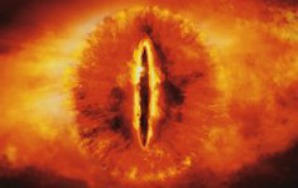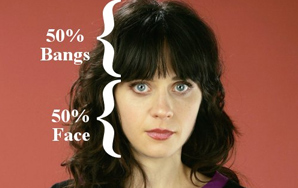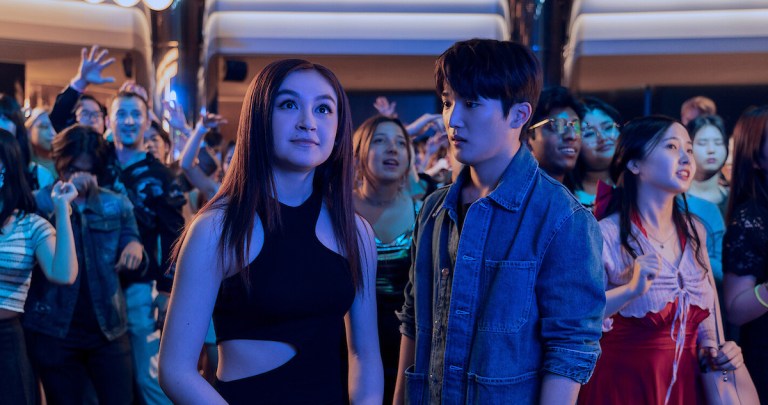Two Contemporary Asian Films Show The Lasting Influence Of The Japanese Master Yasijuro Ozu
In a Western story, an individual or a group overcome certain odds and some sort of resolution is reached. In an Ozu film and other classical Japanese cinema about middle class life it's more about families facing everyday struggles and disappointments.
By Dan Hoffman


Contemporary Asian cinema has a special appeal to Western audiences and critics. Inevitably, we can’t fully appreciate its social relevance or its cultural significance, but this hardly seems to matter because its appeal is universal. Some films seem more foreign than others. For example, Akira Kurosawa, Wong Kar-Wai, Park Chan-woo, John-ho Bong – these directors give us something we can more readily relate to because in many cases their films are inspired by European or American cinema and culture. But other Asian directors offer us films under the sway of a different sensibility and a different ethos, and sometimes these films are more interesting for that very reason. There’s no one “Asian” sensibility, of course, but undoubtedly the films of the legendary Japanese director Yasijuro Ozu have exerted a considerable influence on many current Asian filmmakers.
Ozu’s films are known to be stylistically and thematically consistent. He is known, for example, for his stable long-takes, with the camera close to the ground below eye level. All of his films deal with middle-class Japanese families. They emphasize the quotidian over adventure and a restrained range of emotions over melodrama. Not a lot happens in an Ozu film – a couple visits their grown-up children in Tokyo and see the city; children get in trouble at school; parents get upset over the time their children spend watching TV; parents wish their daughter found a husband – these constitute the types of scenarios we find in his films. In short, they detail the trials of middle-class life.
Edward Yang’s Yi-Yi and Hsiao-hsien Hou’s Café Lumière offer us two visions of everyday life inspired by Ozu. The films do not merely recreate or pay homage to Ozu’s films, and in the end their visions are new. On the surface, Yang’s film resembles more closely a typical Ozu film, in that it intertwines stories about three generations of the same family, beginning with a wedding and ending with a funeral – a very Ozu-esque gesture. But it has a narrative thrust to it that Ozu’s films often lack, and its characters come to realizations about their lives by the end.
By contrast, Hou’s film, made specifically for the 100th anniversary of Ozu’s birthday, is more Ozu than Ozu. On a stylistic level, it immediately calls to our minds the look of the Japanese master. But in Café Lumière, there is even less of story than in the cinema of Ozu. If causal story events seem scarce in, say, the classic Tokyo Story, than there is next to nothing in Café Lumière. In Hou’s film a young Japanese woman rides around on the trains of Tokyo, visits her friend at a bookstore, and visits her parents to tell them she’s pregnant and wants to raise the baby herself – which might seem to be a source of drama, but very little is made of it. The beginning is not the beginning of something, nor is the end a conclusion. Café Lumière might be one of few films that actually deserves the term “slice of life.”
Yi-Yi

Yang’s three-hour long film concerns the Jian family, and for the most part follows NJ, a somber businessman, his teenaged daughter Ting-Ting, and his young troublemaker son Yang-Yang. It opens with the wedding of NJ’s brother-in-law, Ad-Di. Ad-Di’s former lover Yun-Yun appears at the wedding and cries to his mother that she should be the one marrying her son. Something about this occurrence troubles Ah-Di’s mother, and later on the same day she suffers a stroke and falls into a coma.
This event early in the films speaks to what Yi-Yi seems to be saying about life – that it’s not the way we think it is supposed to be. In one way or another, throughout Yi-Yi the characters face the disappointing nature of their lives. NJ is disillusioned with his job in business and attempts a new venture with a Japanese game developer he befriends, but the deal is ruined when his partners go with a cheap imitator. At the same time, he reunites with his former lover from 30 years ago, but finds that it’s still impossible for them to be together. NJ’s wife is absent for most of the film; she goes to a Buddhist retreat in hopes of avoiding a nervous breakdown. Their daughter, Ting-Ting, embarks on a tentative romance with her neighbor’s ex-boyfriend, but it amounts to nothing. Meanwhile, NJ’s brother-in-law, in debt to NJ, continues seeing his former lover and loses more money. The only character who avoids the quiet suffering Yi-Yi depicts is Yang-Yang, whose innocence and youth give him an eagerness to see what life has to offer. But he’s not naïve, as he bares witness to the unhappiness that surrounds him.
The tone of Yi-Yi is fairly neutral. Most sequences convey an understated sadness. The film, however, is punctuated by several emotionally charged moments or moments of revelation for the characters. For example, after her mother’s stroke, NJ’s wife finds herself on the brink of a nervous breakdown. Her mother lives with the family in their highrise apartment, and everyone is supposed to talk to her to help her wake up from her coma. In an amazingly staged sequence, NJ’s wife, crying, exclaims to her husband that she he nothing to say to her bed-ridden mother. “I live a blank,” she cries. Her display of emotion is contrasted to NJ’s lack of emotion. The camera cuts to him, and he appears concerned, perhaps, but unmoved. With a kind of resignation in his voice, he tells his wife that they’ll have the nurse read the paper to her mother.
These events are contrasted with another story. There is a cut to a shot taken from the outside of the Jian’s high-rise apartment that looks through the window at NJ and his wife. It’s dark outside; the lights of the city reflect off of the window. Not only do we here the sound of NJ’s wife crying, but we also hear an intense fight going on between a man and a woman from next door, and Yang cuts to a shot looking through their window. With these shots and the sounds coming from both apartments, Yang frames his main storyline within an urban context – we literally see the sites of the city reflected in the apartment’s window – and next to a far more melodramatic story-taking place in the periphery.
This window device is repeated throughout the film. Yang films sequences from the outside and we see both the interior action and the reflected urban landscape. It seems to be a stylistic device that distances us and encourages a more studied, observational engagement with the images rather than an emotional attachment. The events taking place next door also speak to a central motif of Yi-Yi. The film’s side stories are far more melodramatic than the main storyline. The woman next door to the Jian’s has an affair with her daughter’s teacher (and evidently she fights a lot, either with him or other men), and later we find out that the daughter also had an affair with the same teacher. NJ’s brother-in-law loses money, has an extramarital affair, and has to deal with his mistress showing up at his baby shower. These side stories frame the main story and seem to display a more external kind of domestic strife. Meanwhile, the principal characters avoid such emotional extremes; they seem to live a more inner struggle that’s ultimately just as significant. In fact, both NJ and his daughter both experience the potential for high drama; NJ is faced with a chance to have an affair with an old lover, while Ting-Ting almost becomes involved in a love triangle. It amounts to the same thing. The emotional extremes of the side stories are like expressions of their inner turmoil.
Ozu’s classic Tokyo Story ends with the funeral of the family’s matriarch. The characters accept her death with little mourning and quickly decide who will get her things. In the world of Ozu, death is just part of the transience of life, an immutable fact that signals the very movement of life. In terms of emotional gravity, it’s just as significant as intergenerational conflicts or the unmet expectations parents have for their children.
The funeral at the end of Yi-Yi serves a different purpose. More than being a marker of the movement of life, it concludes something that began when NJ’s mother-in-law first suffered a stroke. The characters in Yi-Yi face the uncertainties of life and struggle against them to see if they can find something new and change their lives. The dilemma they face is more existentialist in nature than what Ozu’s characters face, even though, as NJ and his wife realize, they cannot make life into anything other than what it is.
So Yi-Yi lingers on in the mind not just because of what it says about families but because of what is says about the nature of things. Few films can pull this off; usually an attempt to address the big questions guarantees something trite. Ozu’s films, for all their subtle brilliance and simplicity, can sometimes underwhelm. Yi-Yi overwhelms; it overwhelms us with its scope and all it has to say. We feel, as its end credits roll, that we’ve just witnessed a massive and successful effort to to say something true about life.
Café Lumière

Hsiao-hsien Hou’s Café Lumière is remarkably understated. With its stable long-takes of interiors, the characters framed by windows and doorways, it immediately calls to mind Ozu. But Hou exaggerates the restrained nature of Ozu’s characters and the quotidian nature of his films. Café Lumière challenges what we consider a narrative. In a Western story, an individual or a group overcome certain odds and some sort of resolution is reached. In an Ozu film and other classical Japanese cinema about middle class life it’s more about families facing everyday struggles and disappointments. In Hou’s film, we get moments from Yoko, the main character’s life. There is not necessarily a causal relationship between these events – at least, not that we are aware of (the same might be said of Hou’s more recent film, The Flight of the Red Balloon, a French production). It might be said that Hou’s film mimic’s life in this way: our lives have a “story” to them, but to the outside observer all an event might be is an episode with no apparent relation to anything else.
This is how Café Lumière works. Yoko has some sort of relationship with the owner of a bookstore; we’re not quite sure of the nature of it. She periodically visits him in the film and they discuss a composer Yoko is researcher – we glean that she is a writer. She visits her parents and she unceremoniously tells them that she’s pregnant with her Taiwanese boyfriend and that she wants to raise the child by herself – the boyfriend, by the way, is not a character in the film. The emotional import of these events is left unstated. The only thing that comes close to drama is that Yoko’s mother expresses some concerns about her daughter raising a child alone. We do not get a sense of the emotional lives of the characters. So Hou’s film, like some of Ozu’s films, underwhelms. But there is a certain beauty in the total absence of drama. Frequent long-shots of the city where Yoko lives and the trains that run there punctuate moments with dialogue and become a sort of leitmotif. There is a calm, simple quality to the way events are depicted, and this sentiment is produced in us as we watch. In this sense, Hou’s film is “about” a feeling that we experience while watching it.
So the influence of Ozu lingers on today, in one way or another. These films are appealing not necessarily because they’re so different than Western cinema, though that’s part of it. They’re appealing because their sensibility that might seem foreign to us speaks to our emotional lives all the same. In fact, perhaps they speak to us in a way that popular Western cinema simply cannot because these films emphasize the extraordinary and the unusual, not the day to day. ![]()



